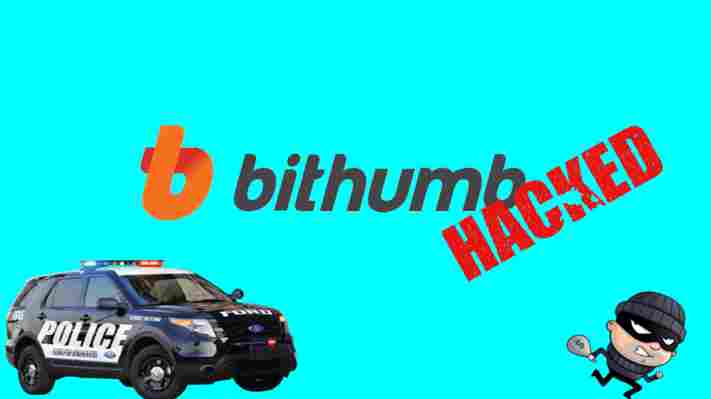The vast majority of organizations across the globe are not using blockchain technology, according to Stack Overflow’s annual developer survey.

Some 48,175 developers responded to questions about blockchain’s adoption within organizations.
According to the findings , 80 percent of respondents said their organization was not using decentralized ledger technology, while 12.7 percent noted their company was leveraging non-currency applications of blockchain.
Additionally, 4 percent said they were implementing cryptocurrency-based products, while 2.1 percent noted they accepted Bitcoin or other coins, and tokens as payment methods.
Only 1.3 percent of respondents said they were implementing their own cryptocurrency.
Developers in India were most likely to say their companies were using blockchain technology, the results show.
What developers think
The survey also asked 60,165 developers for their opinion on the technology.
16.8 percent of developers claimed blockchain was a passing fad, while 15.6 percent said it was an irresponsible use of resources.
In contrast, 29.2 percent said the technology could prove useful across many domains and could change many aspects of peoples’ lives.
26.2 percent said it was useful for immutable record keeping outside of currency, and 12.2 percent said it was useful for decentralized currencies such as Bitcoin.
Overall, the report’s authors highlight that optimism was largely concentrated among young, less experienced developers. The more experienced a developer, the more likely they were to say blockchain was an irresponsible use of resources.
The results from this survey generally fall in line with the findings of a recent KPGM poll , which found that 67 percent of corporates were not currently using the technology.
If anything, the findings of both surveys confirm widely held opinions about the nascent state of the blockchain industry.
Did you know? Hard Fork has its own stage at TNW2019 , our tech conference in Amsterdam. Check it out .
South Korean exchange Bithumb hacked for $31 million
You know it is just a regular day when you read about a cryptocurrency heist. Today’s victim is South Korean exchange desk Bithumb.

The company reported that nearly 35 billion Won ($31.6 million) were stolen from its exchange. The hack began last night and lasted until today morning Korean Standard Time (KST).
Bithumb has taken all regular cautionary measures following the hack.
The company has halted all its deposits and withdrawal services, and urged its customers not to deposit any funds until further notice. The existing cryptocurrencies on the exchange have been moved to a cold wallet, where they can’t be accessed through the internet.
The Seoul-based exchange hasn’t provided further details about the hack or what cryptocurrencies were targeted in the attack. However — in case the exchange fails to recover stolen funds — it has promised to compensate users from its own vaults.
Bithumb is currently the world’s sixth largest cryptocurrency exchange by CoinMarketCap data with a trading volume of more than $415 million over the last 24 hours. But with withdrawal and deposits now halted, it is likely that the trading volume reduces significantly for the time being.
Bithumb has become the third major South Korean exchange to suffer a cyber attack in recent months. Only two weeks ago, Coinrail reported a hack estimated to be worth around $37.2 million. Another South Korean exchange — Youbit — filed for bankruptcy in December last year after losing 17 percent of its assets in a heist.
It is also worth noting that South Korean authorities have been investigating cryptocurrency exchanges to check compliance with tax laws. Bithumb’s own offices were raided in January as part of a larger clampdown.
After the investigation for tax evasion against Bithumb ended earlier this month, the exchange was billed 30 billion Won ($27.1 million) for back taxes.
We have reached out to Bithumb for a comment. If they respond, we will update the story accordingly.
Stablecoins: What they do and how they’re changing the cryptocurrency industry
TNW’s first blockchain conference is fast approaching, so what better time to take a moment to delve into one of the more controversial aspects plaguing the cryptocurrency industry: stablecoins.

Stablecoins are a special kind of digital asset. As the name suggests, the value of a stablecoin token is meant to be stable, valued equally to that of a real-world asset, such as the dollar or gold, and they are often used in their stead.
This gives a stablecoin two major advantages: a lack of volatility – which is a problem for even some of the bigger cryptocurrencies – and a certain measure of trust.
Also, being a virtual currency rather than fiat, stablecoins are ideal and quick for inter-cryptocurrency trading – it saves me from converting my Bitcoin into dollars, and my dollars then into NEM.
In a sense, stablecoins are digital IOUs to be used instead of clumsy, slow (and expensive) real world money. As exchanging one digital asset for another is typically a smoother, cheaper process than trading in and out of fiat currencies, stablecoins are often viewed as a positive first step on the road to financial revolution.
Typically, a single company builds, issues, and manages the circulating supply of a stablecoin.
While there are many kinds of stablecoin, those managed by private companies with enough equity to back their tokens with real world assets tend to provide less volatile products, especially if they provide proof.
So as long as we ignore this centralizing factor, the advantages provided by stablecoins to cryptocurrency traders are numerous, and certainly noteworthy.
How stablecoins work
To understand how stablecoins work, let’s use Tether (USDT) as an example.
Pretend I am a trader, and I want to buy into a cryptocurrency project that I have been researching. It is often the case that the only liquid markets available for many altcoin projects – like the one I’m interested in – exist strictly on exchanges that do not support fiat money.
This means that if my new investment goes up in price, I’m only able to sell it and be paid in another digital currency like Ethereum or Bitcoin.
But as you know, the value of those are volatile, which could mean that the monetary profit I made by investing in the altcoin, can instantly disappear if the value of Bitcoin drops.
Enter a stablecoin like Tether (USDT). I can effectively jump in and out of cryptocurrency markets by using USDT as my home-base, without being afraid my home-base loses value.
I can trade in and out of USDT, selling my digital assets for more Tethers than I used to buy them, and buying with less than the amount I sold them for.
This process only holds weight if there is assurance that the company behind Tether really do have a dollar for every USDT in circulation. After all, if I’m just looking to make profits, at some point I actually want to take those profits.
I need to be able to exchange my USDT for cold, hard cash. Most stablecoins say they can do this, however finding proof of this actually happening is practically impossible.
Nonetheless, stablecoins are great for trading, particularly as the cryptocurrency exchanges that use them normally have a long list of relatively liquid markets. They’re quick, compatible with other digital assets, and have actually supported the cryptocurrency market through some of its darkest periods.
Stablecoins are not all good
These advantages don’t necessarily mean that stablecoins are without controversy.
First of all, stablecoins aren’t actually all that stable . Some are pegged to real-world assets, which, like any other asset, fluctuate in price. Others either hold their collateral in other cryptocurrencies, which are volatile, or have complicated bond schemes that try to guarantee liquidity based on future growth.
The second issue is more fundamental to the idea of cryptocurrencies. As stablecoins are seeking government approval to bolster investor trust, it also means they have to play by government rules. Regulated stablecoins like Circle’s USDC and the Winkelvii-backed Gemini Dollar (GUSD) require users to identify themselves, and can exclude people with prior money laundering convictions.
Take crypto-evangelist Charlie Shrem , for example. Due to an unfortunately chequered past, he has a criminal record that includes felonies. No matter how hard Shrem tries, he will forever struggle to pass strict know-your-customer (KYC) and anti-money laundering (AML) procedures required to trade digital assets on regulated cryptocurrency exchanges.
Many of the new regulated stablecoins are intended to be sold exclusively on exchanges that require identity documents to be submitted before allowing live trade, as the checks supposedly protect the investor from being exposed to cryptocurrency money launderers .
To paraphrase Shrem, who will be speaking at Hard Fork Decentralized , no single entity should decide how to “protect,” or “punish” anyone – but especially those who say they subscribe to the ideals of a decentralized cryptocurrency ecosystem.
When entities are afforded those powers, we have effectively hair-swapped the control of one nation-state for another, albeit a digital one.
The road to decentralization is long and strange
The companies behind the regulated stablecoins would have you believe their “cryptocurrencies” are critical for Wall Street, and their adoption is key to attract the influx of institutional money to fuel the next bull market.
Certainly, anything is possible, but the reality is that regulated stablecoins are powerful for convincing old money to invest in cryptocurrency, especially with fancy Wall Street licenses to prove that everything is above board.
But the molding of cryptocurrencies to the template of traditional finance runs the risk of making a mockery of the concepts on which they were modelled – an open financial system, without intermediaries and gatekeepers.
I fear that cryptocurrency is becoming far too coupled to the traditional evils of the finance industry.
Cryptocurrencies with backdoors for world government feel more like kryptonite to the ideals of the crypto-anarchist manifesto than a boon to a burgeoning industry.
If we are truly on the road to decentralization, I can’t help but think we have begun straying from the path on which we were set, with no regard for how we’re going to get back on track.
Stablecoin philosophy is complicated and difficult to parse. There’s no simple answer, with many considerations to be made. At Hard Fork Decentralized , industry leaders will come together and try to find one. Join us, together we might just start to make sense of it all.











